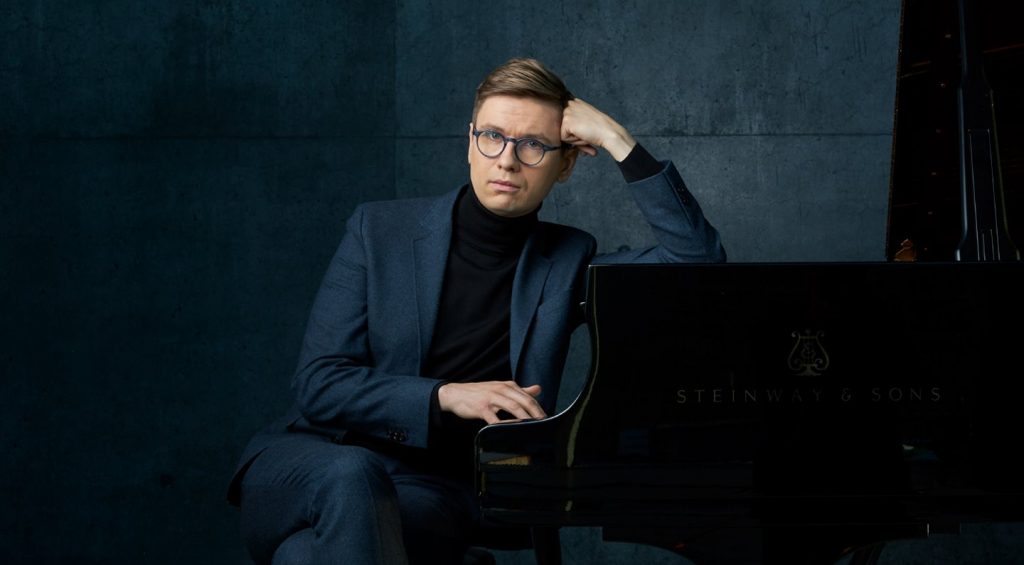by Peter Feher

Happily, both composers — along with several lesser-known figures of the Classical era — featured in Ólafsson’s performance, the first in a series of high-profile piano recitals that The Cleveland Orchestra will present at Severance Music Center this season. It was an up-close look at one of classical music’s more thought-provoking soloists in recent years — and at one of his signature projects.
On paper, the concert was a complete rethinking of a certain composer. Ólafsson’s idea with this program, which he recorded for Deutsche Grammophon in 2021 and reprised piece for piece here, was to demystify Mozart: to make the 18th-century wunderkind seem less singular and more accessible by placing him within his historical context.
In performance, Ólafsson achieved something slightly different. He matched the composer’s reputation for virtuosity, playing each half of Wednesday’s recital without pause. It wasn’t exactly effortless, but it was an impressive show of endurance that gave purpose and shape to the program.
And that’s where the similarities with Mozart largely ended. To start the evening, Ólafsson alternated between the works of a handful of fellow composers, showing the development of musical ideas across a couple of generations. Offbeats were a rhythmic theme that began with the first movement of Baldassare Galuppi’s Piano Sonata No. 9 in F, picked up speed with C.P.E. Bach’s Rondo II in d, and were ultimately refined with a piece like Mozart’s Fantasia No. 3 in d, K. 397.
Even in the unbroken flow of music, you could hear whose compositions were whose. Mozart’s K. 494 and 485 Rondos acted as framing devices that allowed other works — like Domenico Cimarosa’s miniature Keyboard Sonatas Nos. 42 and 55 — to emerge as individual episodes.
But the Mozart pieces themselves were all over the place. Ólafsson brought out the precise voicing of the composer’s Kleine Gigue in G, K. 574, crafting not so much a little jig as a Baroque fugue. He played up the Romantic passion of the Piano Sonata No. 14 in c, staging a struggle that sounded like Beethoven. And he generally took time, exaggerated tempos, and inserted interruptions, even in a straightforward score like the Piano Sonata No. 16 in C.
Fortunately, there was one work at the program’s center that helped make sense of it all. Haydn’s Piano Sonata No. 47 in b wasn’t just another detour between contrasting pieces by Mozart. In its simplicity, wide-ranging style, and little musical peculiarities, Haydn’s sonata represented a wellspring of compositional ideas influential for Mozart in his lifetime and still for some musicians today.
Just look at the second half of Ólafsson’s recital. The pianist offered a transcription of the Adagio from Mozart’s String Quintet No. 3 in g — a strange, sensitive work for standard string quartet plus an extra viola. Haydn might have played that part, according to one historical account Ólafsson cites in his program notes. Certainly, when it comes to chamber music in the 18th century, even Mozart would say there was no one better.
Published on ClevelandClassical.com December 15, 2022.
Click here for a printable copy of this article



